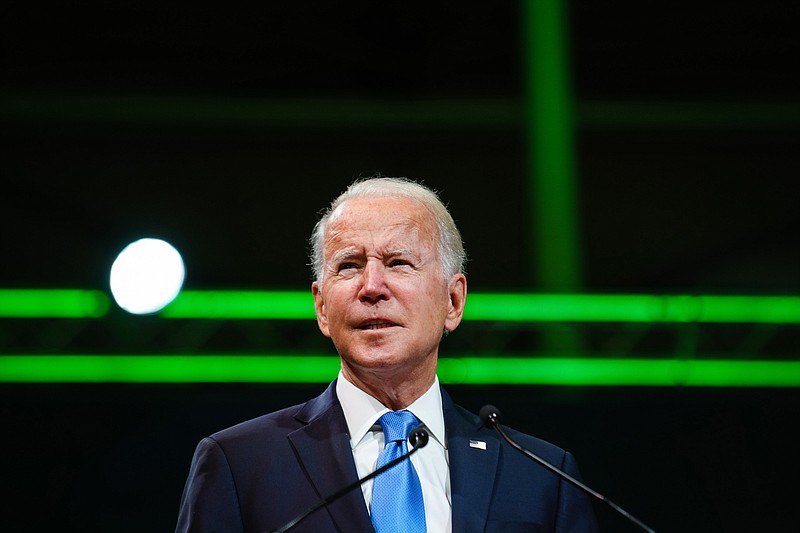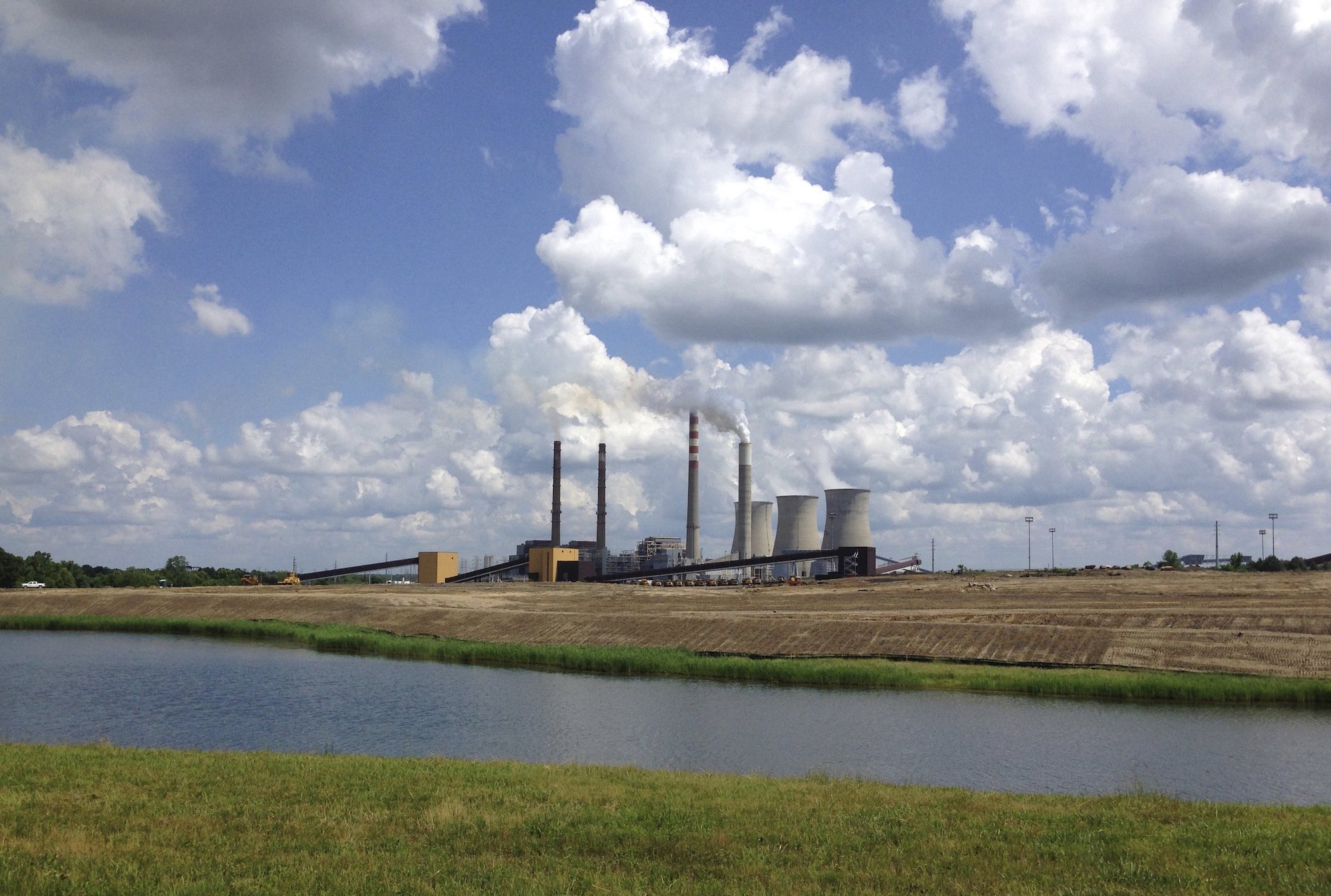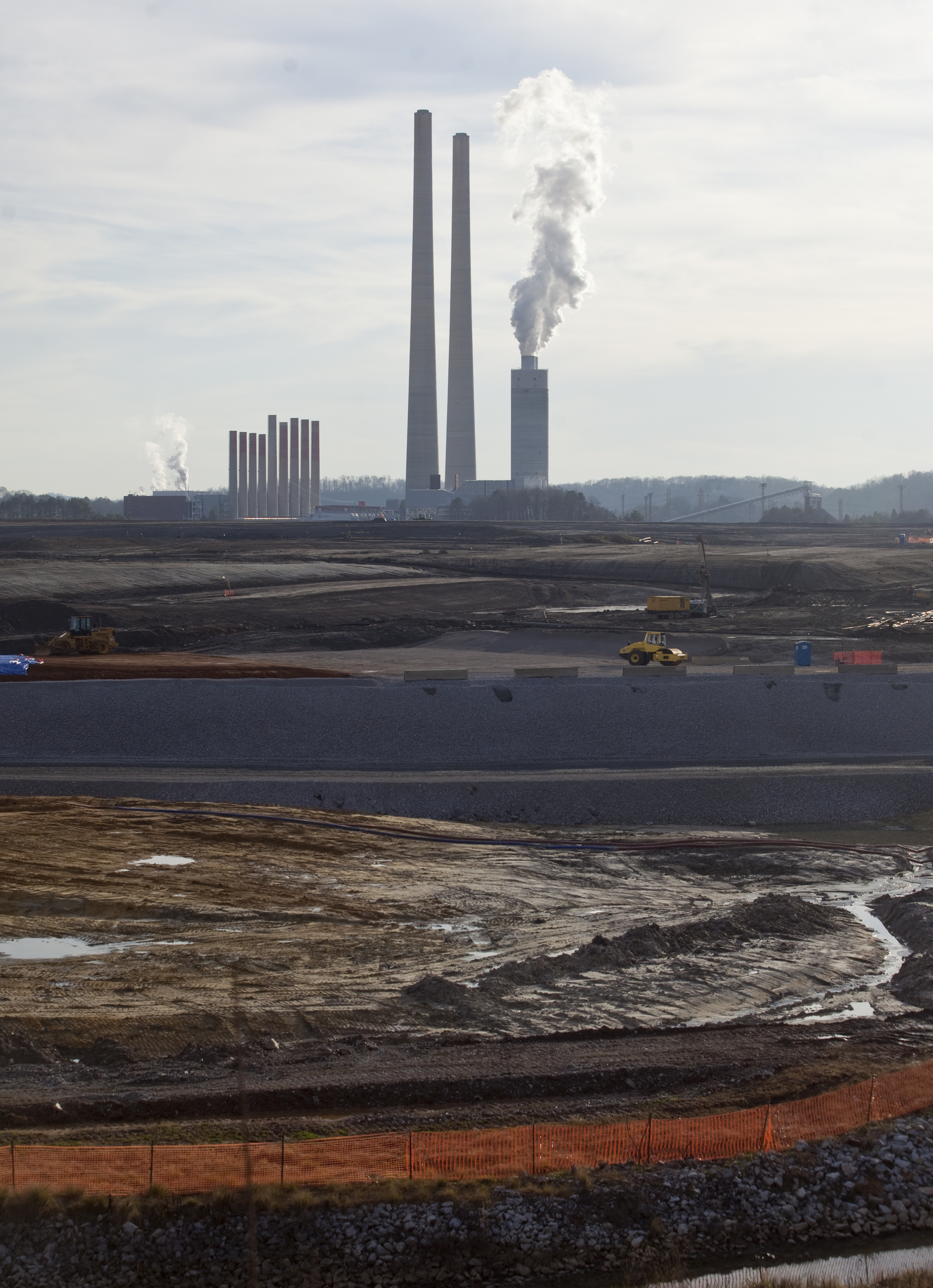The nation's largest federally owned utility plans to invest more than $3.5 billion in new gas-burning electric plants, despite President Joe Biden's commitment to swiftly move away from fossil fuels and eliminate greenhouse gases from the power sector in a little more than a decade.
The Tennessee Valley Authority, which provides electricity to nearly 10 mil- lion people across the Southeast, is replacing aging power plants that run on coal, the dirtiest fossil fuel. But critics say substituting gas for coal would lock in decades of additional carbon dioxide emissions that are heating the planet and could be avoided by generating more electricity from solar, wind or another renewable source.
It marks the second time in recent months that a federal entity has clashed with Biden's climate agenda. The U.S. Postal Service is replacing 165,000 aging mail trucks with mostly gasoline-powered vehicles, despite the desire of the White House and leading Democrats to convert the fleet to all-electric vehicles.
It raises the question of whether President Franklin D. Roosevelt's grand 20th-century experiment with electrification can adapt to a 21st-century climate crisis that requires a radical rethinking of energy production.
Like the Postal Service, the TVA is an independent organization governed by a board of directors made up of presidential appointees. And in both cases, the board is dominated by members nominated by former President Donald Trump, who frequently mocked climate science and was an ally of the fossil fuel industry.
In its deliberations about replacing coal-fired generators, the TVA found that solar or other zero-emissions sources would be less dependable and more expensive than gas, said Catherine Butler, a spokesperson for the TVA.
Although the average cost of generating electricity from wind and solar sources is now lower than from fossil fuels in the U.S., the TVA said that it would be more expensive to tap solar energy for its needs.
"We have an obligation to serve and ensure the lights come on," Butler said. "So when renewables aren't available, natural gas will be available to ensure that reliable, resilient service is available to power our communities."
Shifting from coal to gas
The TVA plans to add about 5,000 megawatts of new gas capacity - enough to power nearly 3 million homes. It is the third largest provider of electricity in the United States.
At one point in the 1960s, the TVA was the biggest consumer of coal in the country, operating 12 coal-fired power plants.
But changes over time have transformed the TVA into the rare utility that now draws almost half its power from zero-emissions sources. Its legacy hydroelectric dams provide 11% of the agency's power, while nuclear energy supplies 39% and wind and solar make up 3%. It has shuttered coal plants to the point that it now draws 19% of its power from coal.
Still, environmental advocates argue that the TVA's directors have lagged behind on energy efficiency and are slow-walking a transition to solar and other renewable power at a time when scientists say countries must sharply and rapidly cut pollution from fossil fuels or face a planet that will dangerously overheat.
"It also sends a terrible message," said Leah C. Stokes, a political scientist and expert in environmental policy who teaches at the University of California, Santa Barbara. "The president has very bold goals to decarbonize the power sector by 2035, and here we have a big federal authority really thumbing their nose at that goal."
Biden's carbon-free goal
Biden has vowed to help limit total global warming to no more than 1.5 degrees Celsius compared with temperatures before the Industrial Revolution. That's the threshold beyond which scientists say the likelihood of catastrophic effects increase significantly. To help do that, he aims to cut the country's emissions nearly in half from 2005 levels by 2030; reforming the power sector is key to meeting that target.
"We can't build any new fossil fuel infrastructure and limit warming to 1.5 degrees," Stokes said. The planet has already warmed an average of 1.1 degrees Celsius.
That two independent agencies are seeming to thwart Biden's climate agenda underscores the difficulty he faces in trying to curb emissions.
His ambitious climate legislation, which includes billions of dollars in tax incentives to stimulate wind and solar energy, is stalled in Congress. The Supreme Court could further limit Biden by restricting the government's ability to regulate emissions in the power sector. At the same time, the administration is facing a legal challenge regarding its calculation of the effect of climate change as it writes federal regulations.
Biden has nominated four new members to TVA's nine-member board of directors who are awaiting confirmation hearings. If approved by the Senate for five-year terms, the newcomers, several of whom have environmental or labor ties, could shift the direction of the authority.
Vedant Patel, a White House spokesperson, said in a statement that he expects Biden's appointees to be confirmed this spring, at which point the White House will "look forward to additional opportunities to advance the pace of clean energy investment in the region."
"Although TVA's board operates independently from the federal government, we are working hard with all federal and nonfederal electricity providers to deliver clean, affordable and reliable energy to all Americans," Patel said.
House probes TVA gas plans
In the meantime, Rep. Frank Pallone, D-N.J., chair of the House Committee on Energy and Commerce, has opened an investigation into TVA's plans for new gas-powered plants. He and other Democrats said that residents pay too much for TVA energy and that the utility is not doing enough to decarbonize.
"Instead of investing in new, less expensive clean technologies, TVA has gutted its energy-efficiency program, interfered with the adoption of renewable energy, and is contemplating the construction of additional and costly fossil fuel projects," Pallone said in a statement. Sen. Sheldon Whitehouse, D-R.I., said he intends to press nominees on the utility's gas plans when they come before the Senate Environment and Public Works Committee on which he sits.
"As the largest federally owned utility, TVA should be leading the way on clean energy," he said. "It's going in the wrong direction right now with more gas burning."
As part of Roosevelt's New Deal, the TVA was created in 1933 to harness the floodwaters of the Tennessee River and improve the living standards of farmers. It now supplies electricity to 159 municipalities, power companies and industrial customers across Tennessee as well as portions of Alabama, Mississippi and Kentucky, and small areas of Georgia, North Carolina and Virginia.
Under current plans, the TVA is aiming to build two gas-fired plants to replace retiring coal plants at Kingston, Tennessee, where an infamous coal ash spill occurred in 2008, as well as a coal plant in Cumberland, Tennessee. It also will replace aging gas-fired "peaker" plants with new combustion turbines in Kentucky, Alabama and Tennessee.
A document the TVA filed with the Securities and Exchange Commission noted the utility's board already has approved $3.5 billion for two of the projects.
The TVA's goal is to reduce emissions 80% by 2035, the time by which Biden wants the entire country's electricity generation to be free of fossil fuel pollution. TVA has set an aspirational goal to be completely carbon free by 2050.
Butler called the TVA's less ambitious target a goal "we know is currently feasible today." She also pushed back on the argument made by environmentalists that the authority should be solely focused on adding more renewable energy, noting the TVA is working with Oak Ridge National Laboratory on technology to capture carbon dioxide emissions as well as develop small modular nuclear reactors.
The TVA generates 3% of its electricity from solar and wind energy, with a goal of building to 10% by 2035.
"That's minuscule," said Amanda Garcia, the Tennessee director of the Southern Environmental Law Center, a nonprofit organization.
"If the government is supposed to be leading by example, and the one federal utility for which the president appoints the board isn't planning to decarbonize by 2035, what does that mean for all the other utilities that don't have the mission of the TVA to serve the public interest?" she said.


